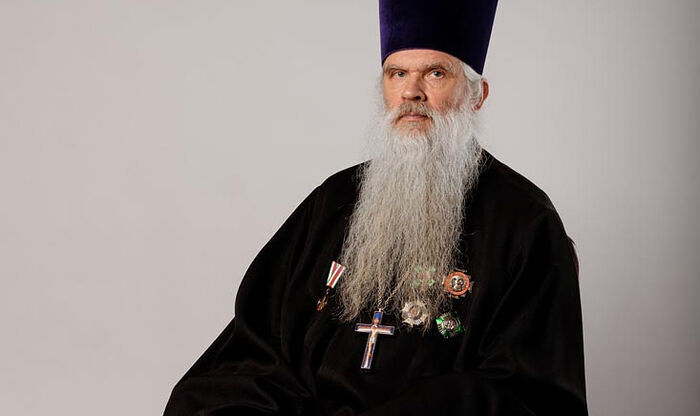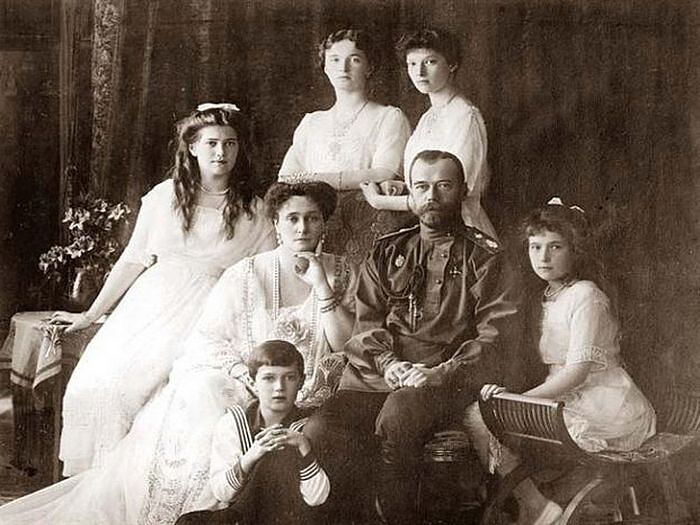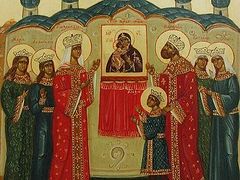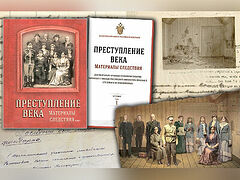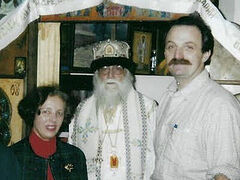This interview was received by the editors of Pravoslavie.ru over two weeks ago and was awaiting publication closer to the beginning of the Bishops’ Council. However, it recently became known that Fr. Valentin Asmus is in ICU, and so we are publishing this talk and humbly asking our readers to pray for the recovery of Archpriest Valentin.
Twenty-two years ago, the last Russian Emperor Nicholas II and his family were canonized by the Moscow Patriarchate. Now the Russian Orthodox Church is discussing the possibility of recognizing the remains found near Ekaterinburg as the relics of the holy Royal Martyrs. Why were the remains not recognized as relics immediately? How do the clergy feel about recognizing them? Archpriest Valentin Asmus, rector of the Church of the Protecting Veil of the Most Holy Theotokos in Krasnoye Selo (Moscow), a Ph.D. in Theology, has kindly agreed to answer these and other questions.
—Why do you think the issue of the Royal Family’s remains has caused such a controversy?
—There are various reasons for the controversy surrounding the remains. The enemies of the Royal Martyrs oppose this recognition for the same reason they once were against their canonization. They are absolutely right, seeing in the veneration of relics a very important, effective manifestation of the veneration of saints as such. Hence the struggle with relics during the Reformation and various anti-Christian revolutions. And the faithful who in the 1990s expressed doubts about the authenticity of their remains were misled by the inappropriate actions of President Boris Yeltsin and the politician Boris Nemtsov, who wanted to use the discovery of the Remains for narrow political purposes—to please the West by dissociating themselves from the bloody violence of Bolshevism. The UK was a special target, since its Queen is the closest relative of the Royal Family. The Church was assigned a purely auxiliary, instrumental role in that foreign-policy action. Meanwhile the Church was in the last stage of preparation for the canonization of the Royal Martyrs, ranking them among the New Martyrs and Confessors of Russia, which took place just two years after the events of 1998—at the Jubilee Bishops’ Council in 2000. In 1998, our leaders wanted to organize a solemn funeral in the Sts. Peter and Paul Cathedral in St. Petersburg and “turn the page,” as one of them put it. The Church, in turn, hoped to acquire new saints in order to pray to them till the end of time. Therefore, Patriarch Alexei II did not want the Church to be involved in a scenario hastily compiled by someone else. I know from very reliable sources that Patriarch Alexei II was personally convinced of the authenticity of the remains. However, he considered it his obligation to pose to the State those questions asked by those who opposed the recognition, since he believed that people who sincerely doubted should receive an honest and satisfactory answer. At that moment, the State authorities did not give a complete and satisfactory answer. This allowed the doubters to become fully convinced of their opinions and did not allow the Church to decide on a matter that was causing fierce confrontation among its children. In fairness, we should note that it was those against recognition of the authenticity of the remains who were particularly embittered.
—Can we see the Providence of God in what has been happening all these years with the remains of the Royal Martyrs, starting from 1918 and up to the present day? Isn’t it a miracle that the remains, which the murderers tried to burn and destroy with sulfuric acid, and eventually buried on a road, survived so well that it was possible to study them comprehensively?
—Will we reject the possibility of a miracle, of God protecting the holy bodies of His saints? Or shall we believe in the omnipotence of the Bolsheviks more than in the omnipotence of God? It is known that the Bolsheviks really wanted to destroy the remains completely. They had both time and means for this, and they did everything they could and had time for. And yet they failed to destroy the holy remains. Undoubtedly, Divine Providence preserved their remains, and it calls us to express our veneration of the holy Royal Family by recognizing their remains as holy relics.
—Sometimes we hear doubts about the authenticity of the Royal Family’s remains on the grounds that there have been no obvious miracles connected with them. How do you feel about such opinions?
—We have no right to count on “miracles from the relics” as long as the relics are not recognized as such and their veneration is hindered, and some believers from among the opponents of recognition allow themselves to speak of the relics of the Royal Family dismissively and even blasphemously. It is we who are depriving ourselves of these relics. Miracles of the Royal Martyrs are widely known. A large collection of testimonies was published by Archpriest Alexander Shargunov. But we should also remember that miracles cannot be demanded either from saints or their relics. Only a few saints are called wonder-workers. The Church recognizes as saints those who have pleased God with their deeds. Miracle-working was not a condition for the canonization and veneration of the New Martyrs. Martyrs are recognized as saints on the basis of their martyrdom. Holy relics are venerated by virtue of their belonging to saints, and not by virtue of miracles.
—In the Soviet era genetics was not considered a science, and even now some people have a negative attitude towards it and do not recognize the results of genetic examinations. What is your attitude to genetic examinations?
—Here we see the Providence of God as well; the relics of the Royal Martyrs were revealed right when the possibility of genetic identification made it possible to establish the truth with complete conviction. And I hope that no more genetic research is carried out. It’s time to finish this. Otherwise an absurd situation is developing: In the process of this endless research, which is very traumatic for the remains, we are ourselves destroying what the Bolsheviks and time could not destroy.
—What do you think of the three-volume work, Crime of the Century, published by the Russian Investigative Committee, and the film, “The Romanov Case: the Investigation Has Established...”, shown on Channel One in Russia?
— I strongly recommend the three volumes as well as the film to anyone who wants to understand the problem of identifying the remains and learn more about the murder of the Royal Family and their faithful servants.
—Can we trust stories circulating on the internet that this or that famous spiritual elder spoke out against the recognition of the remains, or that someone had some significant visions about this?
—What can I say to this? Only that the information circulating on the internet has no legitimate force. Many people want to hide their own thoughts and passions behind the authority of elders. We recall how many years after the death of Metropolitan John (Snychev) of St. Petersburg, more and more books continued to be published under his name—and we even know the name of their real author. In addition, spiritual elders are not infallible or guaranteed against mistakes. For there must be also heresies among you, that they which are approved may be made manifest among you (1 Cor. 11:19).
—Why, in your view, is the rather absurd idea so tenacious, that someone once burned and buried on a road a large number of dead persons who coincide in all respects with the Romanovs and their servants? Doesn’t it come from some mood of protest?
—A heavy burden lies on opponents of the recognition of the remains to prove what is obviously false. Unable to say anything plausible, they resort to absurd ideas and build proofs on emotions. The protest attitude is one side. The other side of the “struggle’s” emotional spectrum is pathological distrust, along with historical and anthropological pessimism, often justified by the current crazy state of the world.
—Opponents of the Royal remains claim that the Church is threatened with “new schism and discord” should the remains be recognized. What can you say about such statements?
—Only those who are capable of going into schism are threatening a split. Of course, the pastoral tone of the Church Hierarchy’s explanations about the recognition of the relics is very important. There should be paternal exhortation rather than an authoritarian directive here. If we are convinced of the identity of the remains, our first duty is not to anger God and not offend the saints of God by refusing to recognize their relics. Those who sincerely venerate the Royal Martyrs, but find it difficult to recognize their relics, are advised to pray to God, the Mother of God and the Royal Passion-Bearer for enlightenment, love and respect for their brothers and sisters who have recognized their relics, and for strengthening their faith and trust in the Church and its Hierarchy. Those who have no love and veneration for the Royal Martyrs in their souls will remain indifferent to the recognition of their relics and will not go into schism because of this.
—What is the attitude of people from your social circle to the Remains?
—In my environment the remains have long been recognized as those of the Royal Family.
—We also hear such statements: “If the remains are recognized, what will happen to Ganina Yama?”1 What is your opinion?
—Ganina Yama will forever remain one of the places of special veneration of the Royal Martyrs. But now another holy site will appear in the Ekaterinburg Metropolia where for many decades the remains of the holy Tsar Nicholas, the holy Tsarina Alexandra, Their children and faithful servants lay. May the Lord have mercy on us through their prayers.

